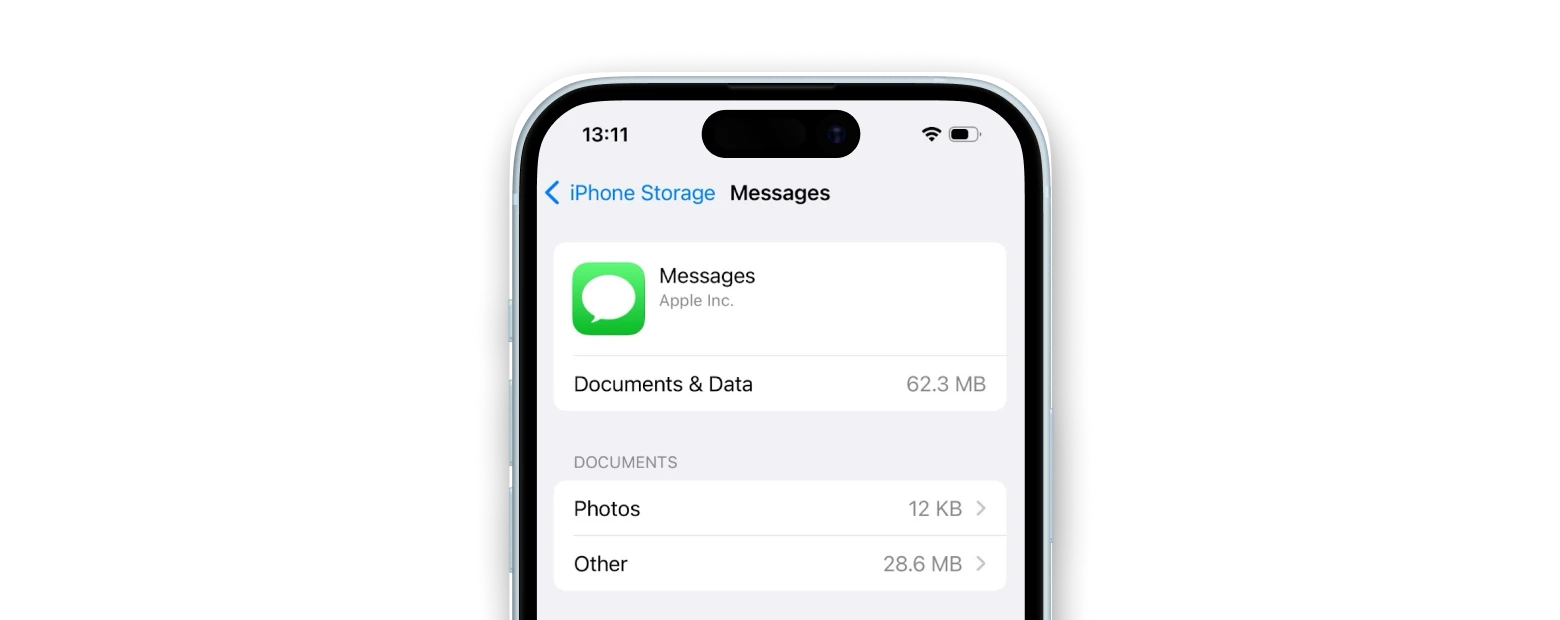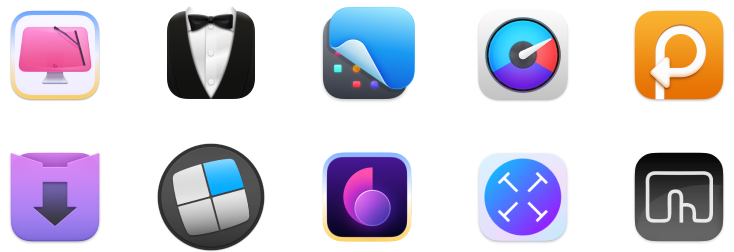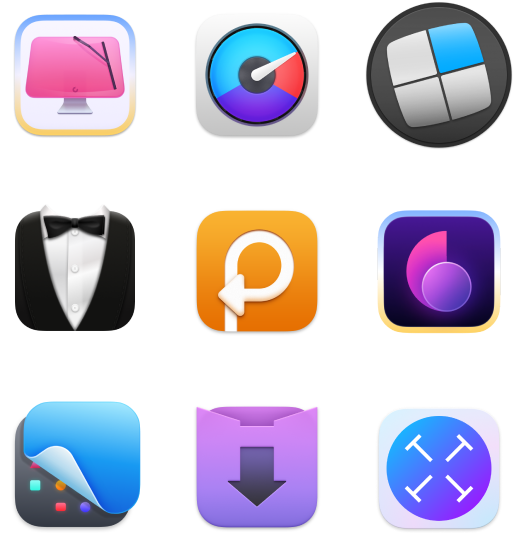How to clear system storage on iPhone
The iPhone has evolved from being just a mobile phone with internet connectivity to an everyday life essential for most people, holding everything from precious memories to valuable contacts, favorite entertainment activities, and crucial work materials. And there comes a time when the device can’t handle that increasing amount of data, and even users with the most spacious iPhones sooner or later will get a full storage notification.
Storage capacity has long been an issue with over 40% of iPhone users running out of storage space once a month or more often, according to a 2015 survey. Back in 2015, iPhone 6 and 6S had a storage capacity of 16 GB, which can seem like nothing now, with the latest iPhone 15 Pro offering up to 1 TB of space. Meanwhile, users are still running low. How come?
Very often, an iPhone’s storage can be taken over by System Data, a default category that can consume all available capacity if left unattended. So let’s figure out what kind of files this category consists of and how to get rid of System Data on iPhone to save space.
What is System Data on iPhone?
Before getting into the details of how to clear System Data on iPhone, it’s useful to understand where it originates and why it can be responsible for the low storage space alerts. Until iOS 15, System Data was called Other, but apart from the name change, its concept stayed the same through iOS system updates.
So what is System Data in iPhone storage? The definition within iOS states that system storage “includes caches, logs, and other resources currently in use by the system.” This storage category is the hardest to maintain because it consists of a large variety of miscellaneous data living on your iOS device.
How to check iPhone System Data storage
System Data can be a few gigabytes in size at first and grow or shrink over time depending on how you use your iPhone. It’s common for iPhone System Data to be taking up 5 to 20 GB of space, but if you notice it growing over 20 GB — that’s a sign it’s gotten out of control.
To prevent this unpleasant surprise, keep an eye on the overall storage consumption in Settings, where iOS breaks down how much storage each category has captured, including Apps, Photos, Media, iOS, and System Data.
Here’s how to view the System Data iPhone storage graph:
- Open the iPhone Settings app
- Tap General ➙ iPhone Storage
- Check the light gray bar representing System Data for iOS 15 and later and Other Storage for iOS 14 and earlier

To check iPhone System Data on Mac, simply:
- Connect your iPhone to a Mac
- Launch Finder or iTunes
- Select the device and check the storage bar at the bottom of the screen
Why does the iPhone’s System Data take so much space?
The question of “why is my System Data so high?” is one of the most common among iOS users, no matter the default storage capacity of their device. An iPhone acts like a true hoarder when it comes to storing cache, and thus the longer you’ve had them, the more System Data they most likely collected.
Here are the things making your iPhone System Data huge:
- System files. Elements that are used by iOS, but aren't owned by a particular app. For example, new Siri voices or fonts will fall into this category since they aren't defined as being used by just one app or the operating system itself.
- Temporary files. Temporary data can be put into storage as System Data iPhone, and removed when iOS doesn’t need it anymore.
- Logs and website caches. These include website logins, autofill URLs, and preloaded websites for faster browsing.
- Caches of streaming media. iOS saves caches of the media you stream the most to ensure smooth playback and they become a major storage space consumer.
How to clear System Data on iPhone
Now that you know the answer to the question “What is System Data on iPhone and which files are included in that category?”, you’re probably wondering how to quickly delete it. There’s no one way to clear System Data iPhone storage completely, but it’s possible to bring it down to less than 1 or 2 GB if you really need to. Let’s explore some of the most effective solutions.
Method 1. Clear System Data by deleting message history
First of all, I recommend you to set up your iPhone to automatically delete your text messages on a schedule.
Here’s how to clear System Data on iPhone by enabling auto-deletion in Messages:
- Open the iPhone Settings app ➙ Messages.
- Scroll down and tap Keep Messages.
- Select either 1 Year or 30 Days.

From here, you can also go ahead and trash older messages, which will also help reduce the size of System Data iPhone. Another way to tame increasing System Data iPhone storage space is by reviewing and manually deleting Notes and Voice Memos you no longer need.
I also heard from my colleagues about a good working method to shrink iPhone System Data.
First, check your current System Data usage (as I described above). Ensure all apps are closed to proceed.
For your next steps:
- Activate Airplane Mode, and turn off both Bluetooth and Wi-Fi to prevent any interference from iCloud, Apple Watch, or other apps.
- Adjust your iPhone’s date to one year ahead. It’s essential to complete the iMessage setting adjustment first.
- Wait for 60 seconds while keeping your phone active.
- Revisit System Data in your iPhone’s Storage settings to see if the usage has decreased. If no change is observed, close the Settings app, reopen it, and check again.
- Change the date to three months ahead from the current setting.
- Again, wait for 60 seconds while keeping your phone active.
- Check the System Data usage once more – it should remain low or decrease further.
- Reset the date settings to Automatic.
- Turn off Airplane Mode.
Congratulations! You've successfully optimized your iPhone's system storage!
Method 2. Remove large attachments to reduce iPhone System Data
Large attachments that you send and receive in Messages can be a big part of what takes up iPhone System Data. You can review large attachments in iOS 14 or earlier, but starting with iOS 15 you can only review the media you’ve downloaded.
Here’s how to get rid of System Data on iPhone by deleting large attachments:
- Open the iPhone Settings app ➙ General.
- Select iPhone Storage.
- Tap Messages.
- Review the categories under the Documents section (Top Conversations, Photos, and Videos).
- Select the attachments you want to delete and tap the trash icon if you have iOS 14 or earlier, or tap the red minus sign between each video to remove it in iOS 15 or later.

Method 3. Clear app caches and offload unused apps
Under the main graph in your iPhone’s storage, you’ll see the list of apps and how much room they take up: both the app itself and the data associated with it. Apps on top of the list are the ones that take the most space. And while the app itself can be of a modest size, its cache can grow to be enormous, causing all sorts of problems like random crashing and freezing.
To prevent this, it’s recommended to clear the cache of your apps every month or two. Conveniently, you can delete the cache right from the app’s settings most of the time.
Here’s how to delete System Data on iPhone by clearing app caches:
- Open the iPhone Settings app ➙ General ➙ iPhone Storage.
- Select an app you want to delete.
- Choose Clear Cache if the app has an option to do so.
- Tap Delete App if there’s no option to clear app cache automatically.
- Go to the App Store to reinstall the deleted app.

If you have an app that’s very large itself, but uses very little data a better solution would be to offload the app instead of just clearing its cache. Offloaded app is deleted from your device, but the cached data belonging to it remains. This way, when you reinstall the app, you can continue as if it was never deleted.
To offload unused apps, simply:
- Open Settings and if you have iOS 15 or later tap App Store, otherwise go to General ➙ iPhone Storage.
- Enable Offload Unused Apps.
With iOS 16 or later installed on your device, unused apps will get offloaded automatically once the option is enabled.
Additionally, you can turn off background refresh for your apps and restrict your iPhone location services to prevent more System Data iPhone from accumulating. You can control both these features from the Settings app.
Method 4: Reduce System Data on iPhone by clearing browsing history
One of the least complex methods for how to delete System Data on iPhone is clearing browsing history and website data on a regular basis. Doing this will not only prevent iPhone System Data from taking up precious storage space on your device, but will also protect your data, as although saved history and website caches allow for faster, more personalized browsing experience, they can also tamper with your privacy.
Here’s how to clear System Data iPhone by removing web history in Safari:
- Open the iPhone Settings app ➙ Safari.
- Choose Advanced ➙ Website Data.
- Tap “Remove all website data.”
- Tap Remove Now.

To delete browsing history in Chrome if iPhone System Data huge, follow these steps:
- Open the Chrome app.
- Tap on the three-dot icon at the bottom.
- Tap History ➙ Clear Browsing Data.
- Choose the time range and tap Clear Browsing Data again.
Method 5: Delete local backups
Some apps on your iPhone store local backups of files on your device, and many of those files are saved as System Data. One of the services that can make iPhone System Data huge with its local backups is iCloud.
So if you’re currently saving media to iCloud and wondering “why is my System Data so high?” — that’s because, by default, everything you save to iCloud is still stored on your iPhone. It’s convenient for quickly opening files even with a slow internet connection, but can become a problem if your device is running low on space.
Here’s how to delete system storage on iPhone by removing local backups in iCloud:
- Open Settings and tap on your name or profile picture.
- Go to iCloud ➙ Manage Account Storage.
- Tap Backups and choose the device whose backups you’d like to delete.
- Select Delete Backup ➙ Turn Off & Delete.

When you delete a backup, it also turns off the function that creates automatic local iCloud backups of your iPhone. You can turn that function back on in iCloud settings on your device.
Managing multiple devices and their respective backups can get very time-consuming, that’s when a reliable file-transferring tool like AnyTrans can come in very handy
AnyTrans is an app that instantly backs up and copies your iPhone content to Mac, as well as moves data across iOS, iTunes, and iCloud, completely bypassing cloud storage restrictions.
As a secure and completely customizable transfer manager, AnyTrans has the power to bring your devices into sync and perform seamless, automatic backups in no time!

Method 6: Factory reset your iPhone
If all else fails, but you’re still wondering “why is my System Data so high?” — there’s one more solution you can try and that’s restoring your iPhone. This process entails backing up all data stored on your iOS device, factory resetting the device, and then restoring it from the backup.
Here’s how to back up an iPhone before performing a full reset:
- Connect your iPhone to a Mac.
- Open Finder or iTunes and select your device.
- Go to General ➙ “Back up all the data on your iPhone to this Mac.”
- Tick the “Encrypt local backup” box to preserve account passwords and Health data.
- Tap “Back Up Now” and wait for it to complete.
Now, disconnect your iPhone from your Mac and follow these steps to factory reset your device and clear System Data iPhone storage:
- Open the iPhone Settings app.
- Go to General ➙ Transfer or Reset.
- Select “Erase all content and settings.”
- Tap Continue and enter your device’s passcode, if prompted.
- Enter your Apple ID Password and tap Turn Off from the top-right corner.
- Tap Erase iPhone.

Once the process is complete, your device will be reset to the state it was when you first took it out of the box. From here, you can connect it back to your Mac, open Finder or iTunes, go to General and click Restore Backup.
Now that you know how to solve the iPhone System Data huge problem, it’s time to elevate your user experience even further with Setapp, a platform of more than 240 best in class iOS and macOS apps.
Try AnyTrans for better performance and smooth file transfers between your iOS and macOS devices, while CleanMy®Phone will find and remove all duplicates to keep your iPhone or Mac free from clutter! Need to speed up your Mac? Get CleanMyMac X via Setapp. Note that on Setapp, you will find apps for almost any task on your Apple devices.
Best of all, all these apps are available to you at no cost through a seven-day trial of Setapp! Check any of the apps today for free and see how good your device can really be!
FAQs about System Data iPhone storage issues
The guide above details all the most effective ways for how to delete system storage on iPhone, but here are some additional answers to the most common questions about this topic.
Why is my iPhone System Data so high?
System Data iPhone category in storage can take up a lot of space because it includes many types of files that users tend to overlook when cleaning their device like various caches, logs, updates, Siri voices and much more.
Can I delete System Data on iPhone?
There’s no way to delete iPhone System Data as a whole, but you can clear specific files within that category to free up space on your device. From clearing app caches to resetting your device, try going through solutions outlined above.
Why is iPhone storage full when I have iCloud?
This is due to a default function which ensures everything you save to iCloud is still stored on your iPhone. This makes it convenient for quickly opening files from the cloud, but can become a problem if your iPhone is running low on space.
What happens when iPhone storage is full?
If your iPhone runs out of storage it may slow down and become less responsive, plus some apps may not be able to be installed or updated. To make more storage available, you can delete unnecessary files and clear System Data iPhone.






